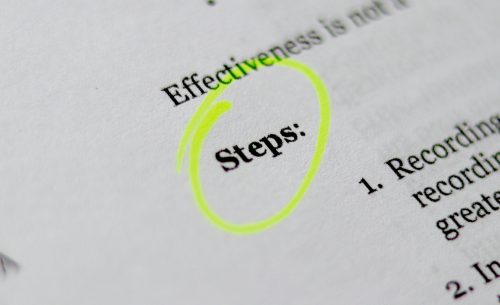September 8th 2023
We’ve all been the ‘new person’ at a job in the past. No one can start a job immediately knowing all the intricacies required of a role within an organisation and its’ teams. Companies can differ in the way they approach new employee onboarding, whether it’s a slow-burn allowing time for the new hire to settle in or throwing them in at the deep end in a fast-paced sector. Regardless of individual company approach, there are steps that need to be taken to integrate new people and keep them around for the long haul.
Today, we’re going to explain what onboarding is and outline steps that you can take to make your new hires feel completely at home and confident in their abilities to execute their role effectively from day one.
What is the Onboarding Process?

Let’s start at the beginning. You’ve decided to go ahead with an applicant for a role, and they’ve come in to learn the ropes. This step in crucial for them to understand the inner workings of the business, and what will be required of them going forward.
During the initial onboarding process, you’ll need to introduce them to key people within the company, whether that’s the other members of their team, managers they’ll report to, HR and other VIPs.
After this, give them a rundown of what a typical daily routine would look like for them and what critical company policies they need to understand. This can vary depending on what industry or sector you’re in, so you’ll likely need to tailor this experience for them accordingly.
Also – let them know what the dress code is (because turning up to work at the office in flip-flops might not be a great look).
Why is an Effective Onboarding Process So Important?
If your employees feel valued and settled, they’re more likely to stick around and be more productive. The onboarding stage of a new hire can be critical to their success in your company. Taking the steps right from the get-go to integrate them properly will do wonders for their productivity.
Typically, the onboarding process covers the whole first year of their employment. This is why we suggest creating a form of roadmap for them to follow, where they can receive regular updates on their progress, and check-ins on how they feel they’re doing.
The process goes beyond a simple week-long ‘learn the ropes, and off you go’ approach. If you want employees to stick around, an effective onboarding process is a great way to improve employee retention.
Before and During the Hiring Process

Hiring and onboarding are almost like two edges of the same coin. Onboarding typically starts at the hiring point, but it’s also crucial to understand that what they learn during the application, and subsequent hiring processes, can also be taken into the onboarding process too.
Before the Hiring Process you should:
- Give clear and concise information about the requirements of the role
- Let candidates know the different stages of your hiring process, and how long each stage takes
- Always ensure correct and up-to-date information is being provided
During the Hiring Process you should:
- Follow-up with candidates promptly and frequently after each stage of the process
- Allocate ample time for interviews and make them feel included in the conversation when interviewing
- Let candidates know when company-required reference and background checks have been completed
- Be open and honest when communicating, as you expect the same in return
Employee Onboarding Checklist
So, now that we’ve stressed how important the onboarding process really is when taking on new hires, let’s provide a clear and succinct set of steps for you to follow:
- After confirming a candidate has been successful, ensure all relevant paperwork and new hire forms/contracts have been completed
- Share with the new hire their schedule and requirements on the role within your company
- Show them their new work area and introduce them to other team members
- Prepare a formal induction, where they can meet their manager(s) and other important people to the business
- Set up a training schedule and assign them a mentor/buddy for them to start learning the ropes
- Follow-up regularly, and ask for feedback on whether you can improve your recruitment process (so you can refine it, if necessary)
- Allow questions at all stages to help them get settled in faster
The First Day

Now we’ve outlined the general steps on the onboarding process, let’s dive into the first day for the new hire.
After arriving at work, you should immediately greet your new employee with a guided tour of your office/workspace, showing them key areas such as kitchens, toilets, break rooms, printing facilities, fire exits, and areas critical to your daily operations.
After this, sit down with them and run through your employee handbook if your company has one, as well as office policies and procedures. This will give them time to ask any final questions they may have.
Finally, take them over to their workspace and integrate them with their colleagues, who will then take over for the rest of the day.
Let’s look at their first day in an easy-to-follow list:
- Start with a guided tour
- Employee handbook run-through
- Outline policies and procedures
- Colleague introduction
The Next 90 Days
After their first day, and being successfully integrated, the following three months are critical to the onboarding process. This gives you enough time to review the performance of the new hire over an extended period, and see how they’re fitting in.
By day two, they should have a firm understanding of what their first tasks are, how to complete them, and who to report to when they’re done.
Each week you can check-in with the new employee to see how they’re getting on in the role. At the end of each month, set up a more formal meeting with them to review their standard of work so far and allow time for you to answer any questions. After all, empathy is the most important leadership skill, so showing them that you care for their success will only help them to settle in much faster.
At all stages of this 90-day period, you should be encouraging your other employees to engage and collaborate with the new hire. This will help them to feel more at ease, like they have a supportive team around them.

Employee onboarding, when done correctly, is a very simple and effective way to ensure your new employees want to stick it out with you. Making them feel welcomed into the fold and given all the tools they need to be successful at their new role is key.
Following the steps that we’ve outlined here today will help set you up for success in your future hiring and onboarding endeavours.
If you’re currently in the process of hiring and need more space for your employees, head over and look at our selection of serviced offices and managed offices in your area. We offer a range of office sizes for you to choose from, so no matter how big your team gets, we’ll have an office that’s suitable for you!
